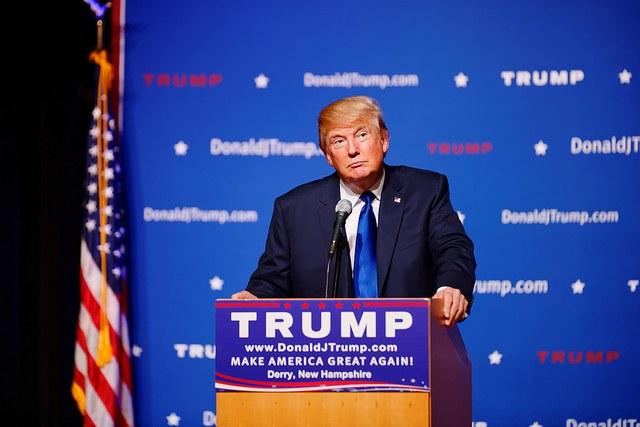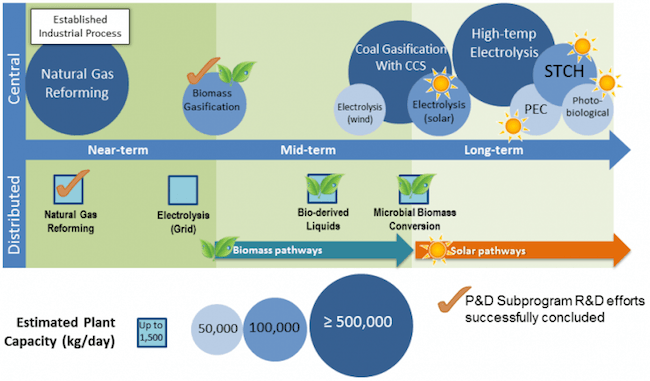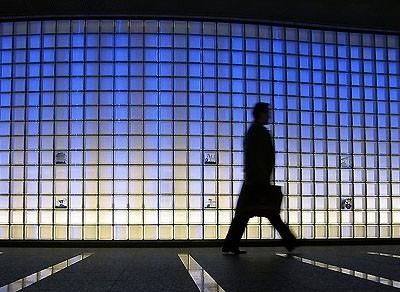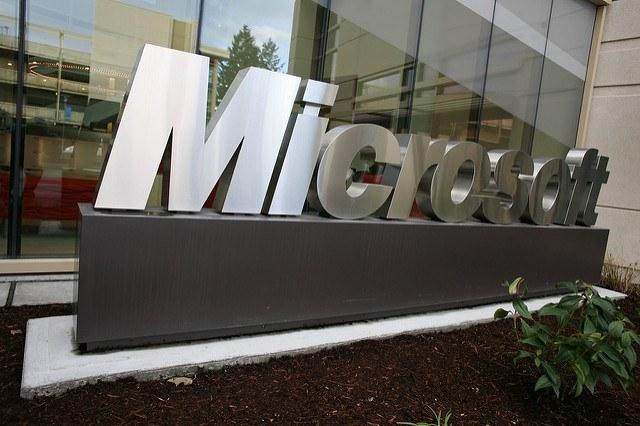Energy Policy Changes in a Trump Administration


Many in the sustainability sector are worried about what a Trump administration will mean for energy policy. Trump made campaign promises to increase coal and hydraulic fracturing (commonly known as fracking). He also pledged to roll back the Clean Power Plan, the linchpin in the Obama administration’s strategy to reduce greenhouse gas emissions. Meanwhile, he said very little about renewable energy. What will that mean for energy policy?
Analysts for Bloomberg Intelligence, Bloomberg’s research division, looked at how a Trump administration will likely affect energy policy.
Trump's campaign focused on fossil fuels, namely limiting regulations on oil and gas production and ramping up coal use in the power sector. He said he wants to stop the Clean Power Plan. But if the plan is left intact, it could support new wind and solar power in some regions. The Supreme Court stayed the plan in February, and the U.S. Court of Appeals for the D.C. Circuit heard arguments challenging the plan in September.
Trump hasn’t said he would back policies which increase clean energy capacity, while other Republican leaders went on record saying the government should not support clean energy projects.
What could be at stake are the recently extended wind and solar tax credits. Congress may roll them back. Even if they don’t, Trump could push for tax reform, and that would “threaten the value of the credits for project owners,” wrote BI's analysts. The wind energy tax credit is likely safe under Trump’s administration and the next Republican-controlled Congress. However, Congress will probably let the tax credit phase out in 2019.
It is likely Trump and the Republican-controlled Congress will sideline federal clean energy policies, so the focus will shift to states.
As Susan Tierney, senior advisor to the BI Analysis Group and former assistant secretary of policy for the U.S. Department of Energy, told Clean Technica, “Most of the states have been pushing for deeper investments in energy efficiency.” And state policies “pushing for rooftop PV (photovoltaics) and utility-scale solar have transformed those markets.” States are leading the way and will likely continue to do so under President Trump.
Trump could be good for coal but not so good for offshore wind
Under Trump, coal may be king. During his campaign, Trump made promises to the coal industry to revive mining jobs. In May he said, “Let me tell you: The miners in West Virginia and Pennsylvania, which was so great to me last week and Ohio and all over, they’re going to start to work again, believe me.”The Clean Power Plan aims to reduce annual coal use in the U.S. by about 230 million tons by 2030. If the courts either remand or overturn the plan, it would give Trump “wide latitude” to create a replacement rule, as BI's analysts put it. A halt on the Plan could also lead to decreased natural gas in electric power and more coal use. Trump may also try to reverse Obama’s moratorium on new coal leases on federal land.
Market forces are not on the side of coal, and all the changes Trump might make can’t change that fact. Cheap natural gas is “coal’s true rival,” as recently reported in the MIT Technology Review. Through hydraulic fracturing, commonly known as fracking, natural gas volume has increased while coal mining jobs declined.
Meanwhile, offshore wind has a huge potential. Over 2,000 gigawatts could be accessed in state and federal waters along the U.S. coasts and the Great Lakes. The Interior Department under President Obama has set a goal to reduce the time and costs connected with federal permitting of offshore wind projects. The agency under Trump’s administration will likely not have such a focus.
The federal government now holds auctions to grant leases for offshore wind energy sites that are under federal jurisdiction. There is an upcoming auction for leases off the shores of New York and it could attract more new companies than previous auctions. However, BI analysts said the U.S. offshore wind industry, which is still in its infancy, may need incentives to “spur significant project development.” Those incentives will likely come from states and not the federal government under the Republican-controlled Congress. An example is a new law passed in August by Massachusetts Gov. Charlie Baker, a Republican, requiring the state to procure offshore wind energy contracts that could drive 1.6 GW of offshore wind energy.
Image credit: Flickr/Michael Vadon
7-Eleven Announces First Sustainably-Sourced Coffee


It has happened to all of us. You were either too lazy to take out a filter and measure grounds for that morning pot of coffee, or maybe the coffee pod machine broke once again. The drive-thru at the local Starbucks was way too long. So, out of desperation, you swing by 7-Eleven to grab a cup of coffee, add about five or six of those Coffee Mate hazelnut-flavored creamer shots, hope no one you know sees you, and then head on to work. You would never admit it, but you actually enjoyed that guilty pleasure.
Now, however, you have one reason to feel less guilty about stopping by that corner convenience store. Last week, 7-Eleven announced that it would start offering a Rainforest Alliance-certified brew at participating stores.
The coffee is sourced from Matagalpa, a region in central Nicaragua that has produced coffee since the mid 19th century. The beans from Matagalpa are certified by the Rainforest Alliance, an NGO that has been working with farmers on sustainable farming practices for over 20 years. The new coffee, sporting that little frog symbolizing fair trade and environmental responsibility to many, will be priced the same as the other coffee varieties across 7-Eleven’s convenience stores.
This announcement is a big change for 7-Eleven, which often flies under the radar but still has a huge presence around the world. The Japanese-owned chain is a fixture in many neighborhoods, with over 10,700 locations in North America and more than 50,000 overseas. In the U.S., estimates suggest the company is the fourth largest seller of coffee, coming only behind McDonald’s, Dunkin’ Donuts and Starbucks. The impact of its operations and its products’ supply chains cannot be denied, and coffee is one place to start.
To that end, 7-Eleven announced this summer that it would work with the NGO Conservation International (CI) in order to establish corporate responsibility goals for the next several years. That agenda includes an energy efficiency program, steps to reduce unnecessary packaging and starting next year, a boost in corporate giving. With all those cups flying out of its stores throughout the day, coffee would naturally be a part of 7-Eleven’s shift to becoming a more responsible and environmentally conscious company.
It is important to remember that this is only one coffee option, and 7-Eleven made it clear that this Nicaraguan cup of java will not be available at all of its locations. Nevertheless, this is one significant step towards making sustainable business the norm, not the exception. Long known for the Big Gulp and calorie-laden hot dogs, 7-Eleven is now on the healthier and more socially conscious bandwagon.
Image credit: 7-Eleven
Driving modern slavery up the agenda


Tax authority collects £3bn from avoiders


The Business Case for Black Lives


Americans live in a very different world now than we did a few short weeks ago. As a Trump presidency looms over our heads, many black and brown people are left wondering if our lives really do matter here.
So far, our country has not proven that they do. And with Trump taking office, it doesn't look like that's going to change any time soon.
For eight years, President Barack Obama and his beautiful family served as shining examples of a "post-racial America" for the rest of the world. Because we can't be racist if we have a black president, right?
But as I watched states across America turn red on election night, it painted a very different picture of our country. It became one that officially and overwhelmingly proclaimed that some lives matter more than others. Men matter more than women. Rich matter more than poor. And white lives matter more than others.
I have to admit, the moment I heard Donald Trump was running for president of the United States of America, I checked out of the entire election. I just couldn't fathom the possibility that a society of living, feeling, breathing human beings could elect such an abominable, vile and morally bankrupt man into any leadership position, let alone one of the most important positions on planet Earth.
The sheer terror of this moment is overwhelming.
Minorities in this country have endured a massive amount of collective trauma throughout the course of this long, arduous and agonizing presidential campaign.
Between one candidate desperately trying to woo our votes by taking photos with Beyonce and dropping the ‘Nae Nae' on the "Ellen Show," and another candidate who made the most degrading pitch for black votes in the history of time, it's no surprise that many black people are left feeling discouraged and apathetic. We're already poor, jobless and miserable, according to Trump, so we might as well let him make America great again.
Many of us have faced threats to the very core of our identities and beliefs. America has essentially told us that it's not okay to be ourselves and exist in our own bodies. It's more than not okay. It is violently opposed.
This election confirmed exactly what we all hated to admit: Misogyny, bigotry and hatred trump black lives any day of the week.
So, what then is the business case for black lives?
I mean, we're literally being shot dead in the streets and our country barely bats an eyelid. Why should we be so surprised our president-elect was endorsed by a former grand wizard of the KKK?
My stomach turns itself into knots when I think about the larger implications this will have on our society and on our planet. If our own commander in chief has no respect for human lives, what kind of precedent does this set for our country and the rest of the world? And, what will it take for businesses to choose a side?
Black dollars matter
If our actual lives don't matter, our sheer buying power should mean something.
Black buying power is expected to reach $1.2 trillion this year and $1.4 trillion by 2020, according to the University of Georgia’s Selig Center for Economic Growth. That is so much combined spending power that it would make Black America the 15th largest economy in the world in terms of gross domestic product, the size of Mexico based on World Bank data.
As the largest consumer group of color, black Americans dutifully contributed to our country's economy. We invested our hard-earned dollars into American businesses, and yet so few of these businesses would ever think to speak up and intervene on our behalf.
One business that’s not afraid to speak out on issues that matter is Ben & Jerry's, a shining beacon of light in the gray world of corporate social responsibility. Ben & Jerry's has passionately and consistently advocated for black lives. A statement on the company's website reads: “Black Lives Matter because they are children, brothers, sisters, mothers, and fathers. They matter because the injustices they face steal from all of us — white people and people of color alike. They steal our very humanity.”
Black minds matter
As a professor in one of our country’s most prestigious business schools, I have the honor and pleasure of educating the business leaders of tomorrow. I try to instill in them core values like empathy, collaboration and divergent thinking. These soft skills are often absent in today's business world.
When tasked with making the business case for diversity, I pulled out case after case of businesses that increased their profits by implementing strategic diversity initiatives. TriplePundit has covered a number of these programs over the years.
While it’s clear that having a comprehensive diversity initiative is the way forward for businesses and institutions in our country, it’s not enough to just have more black and brown faces in the room. You also have to make sure those voices are being heard, respected and valued.
Change happens when people are willing to listen and hear the struggles of their neighbor, put aside preconceived prejudices, and truly seek to understand one another and grow. Empathy, respect and open communication are key to tearing down the walls we put between ourselves and others.
We all have something different, unique and equally valuable to bring to the table. By embracing those who think differently and have different experiences than ourselves, we can slowly help each other move past this shameful chapter in our country's history.
Black lives matter
Ben & Jerry’s continued in its statement: “Systemic and institutionalized racism are the defining civil rights and social justice issues of our time. We’ve come to understand that to be silent about the violence and threats to the lives and well-being of black people is to be complicit in that violence and those threats.”The first step in overcoming systemic racism and injustice is to simply understand and admit that there is a problem.” The second step “is making an effort to try to understand the perspective of others whose experiences are different from our own. To not just listen, but to truly understand those whose struggle for justice is real, and not yet complete.”
The future of our nation and our very way of life is dependent on the principle of all people being equal. Instead of pointing the finger at one another, now is the time to come together to better our society and institutions so we may finally fulfill the founding promise of this country: to be a country with dignity and justice for all.
In other words: All lives do matter. But all lives will not matter until black lives matter.
As Albert Einstein once said, “The world will not be destroyed by those who do evil, but by those who watch them without doing anything.” You have to decide for yourself if you truly believe that all humans are born equal. And then, once equipped with that belief, decide what you will do about it.
This is a call to action
Businesses are what drive this country forward.
Black Lives Matter should not be taboo at the water cooler and in the boardroom. If you have black employees, if you acknowledge black people as human beings, if you are black, we have a tremendous opportunity here to push the world forward. It's our responsibility.
This is the time for business to take a stand. Teach your customers that tolerance is not enough. Enact fair and equitable hiring policies. Don’t create diversity initiatives just for profit’s sake, but because you know that having a diverse team is the only true key to innovation.
Set a zero-tolerance policy for racism and discrimination in the workplace. Create spaces for healing and conversation. Support community-based programs and initiatives that are doing real work on the ground.
Above all, be the change you want to see in the world around you.
We can no longer sit by idly waiting for someone or some policy to fix everything for us. It’s time to take America back from the government because clearly they don’t know what they’re doing.
Businesses have the power to change the narrative. We have to make a commitment to ourselves and one another to keep making steps in the right direction, despite who is in office.
Building Sustainable Neighborhoods Through Community Composting


Composting is almost as old as farming itself. While sprawling, state-of-the-art commercial composting facilities near metropolitan areas in California, Minnesota and New York state claim headlines for their ability to combat greenhouse gas production in landfills, the truth is that aerobic composting is anything but a new phenomena.
The Mesopotamians, the Greeks and the early tribes of Israel all used composting methods. Native Americans and European pioneers also knew that composting their biodegradable materials and tilling them back into the earth was vital to their success as farmers and, ultimately, as thriving communities.
For many of us that rich, loamy earth now comes in prepackaged bags. But some cities and towns are looking to reenergize the effort to redirect biodegradable materials away from landfills. This necessitates commercial partnerships with plants that can handle as much 1,000 tons of feedstock a day.
But avoiding such investments may prove even more costly. Communities that ship away their compostable materials (or don’t compost at all) are missing out on huge opportunities, Sarah Boltwala-Mesina told TriplePundit.
Boltwala-Mesina is the founder and executive director of Inika Small Earth, a San Diego-based company working to educate people about the benefits that local composting initiatives can bring to communities, big and small.
Present-day industrialized waste management is based on the idea that large, dedicated refuse facilities can get rid of a problem, rather than make use of a set of resources, Boltwala-Mesina said.
There is no "away"
"Most of the large-scale facilities are sited and planned on the concept that waste is something that needs to be sent away,” Boltwala-Mesina told us. That “away” concept is based on a time when societies struggled to find economic approaches to their waste problem.
“Thirty years ago, we needed economies of scale. We needed to consolidate stuff," she explained. "To make things pan out financially, we had to [build] these large facilities because there just wasn’t enough material in many cases to warrant decentralized systems,” like community composting initiatives.
Industrialized composting centers not only helped divert material away from landfills, but also made economical sense for large-scale waste movers that already had the land and facilities to address regional waste disposal needs. It also dovetailed nicely with conventional thinking that waste is something that needs to be dispensed with, not a resource that can be utilized.
Today, we realize that community-based composting initiatives lead to so much more than smaller (or empty) landfills and economical gardening resources. It leads to better food recovery, better recycling and reuse strategies, expanded educational opportunities for local school and yes, happier communities that often feel more engaged and connected through shared efforts.
And depending on how it’s structured, community composting can also be cost effective, noted Boltwala-Mesina, who admitted the cost of operating an industrialized composting facility can be considerable.
“Large-scale operations need to commit to a certain amount of feedstock” per day to operate, she told us. Many community initiatives benefit from volunteer labor and modest grants designed to support community improvement projects. Cities like Austin, Texas, defrayed their overall operating costs by investing in a community-driven composting program.
Community composting: It's time for regulations to catch up
But while support for community composting is on the rise, many of the regulatory processes that deal with waste management often are out of sync with those goals, Boltwala-Mesina said.
Critics say some state legislation, like California Assembly Bill 1103, unfairly favors large-scale industrial composting over community iniaitives. Food2Soil, a composting project started by Inika, opposed the California legislation, saying it overlooked the benefits that could come from community resource-driven programs. Much of that limitation was due to the way the legislation looked at what was termed as “waste."
“What is considered 'food waste' … could be second harvest, raw material for industrial application or animal feed by receiving entities," Boltwala-Mesina said.
"Many of these ‘receiving entities’ are micro-composting enterprises and community-based food recovery efforts already burdened by exclusive franchise hauling restrictions and similar other barriers that affect their ability to operate and fund themselves,” Food2Soil further noted in a May 20016 letter to the California Senate Environmental Quality Committee.
Under the legislation, some larger operators were excluded from having to track organic materials disposal and diversion, while smaller operators were not.
The bottom line: It's time to rethink waste
Concerns about bills like AB1103 underscore another misconception about waste, which is that food that is thrown away can’t, and shouldn’t, be diverted.
It’s an issue that has already been well studied by the Environmental Protection Agency and other organizations. Americans threw away 38 million tons of food in 2014 alone, with only 5 percent diverted to composting. The EPA’s increased effort to educate restaurant owners and the public about safe food diversion options is helping to reshape the image of “unwanted” or unused food.
Community composting and diversion programs can address many of these issues, Boltwala-Mesina insisted. But the regulatory framework needs to be able to address non-commercial operations that benefit the community as a whole. And so far, that’s still a work in progress.
“So much of our focus really is on trying to find creative [answers] that allow us to operate,” said Boltwala-Mesina, who admitted that issues like zoning and franchise agreements designed to favor commercial operations often slow down community-based initiatives.
But the investment in time, she insisted, is often worth it. Access to local soil through community-based composting "allows us to grow food cheaper than we would according to a conventional model," she said. This makes it possible for communities to address one of the biggest challenges related to poverty and homelessness: food insecurity. In this sense, she concluded, community composting “is the linchpin to addressing many of those food access issues” that we face today.
Images: 1) Flickr/USDA NCRS and Analia Bertucci; 2) Flickr/LAGreenGrounds; 3) Flickr/ItzaFineDay
Hydrogen to the Rescue: U.S. Manufacturing Jobs are Already Coming Back


When Donald Trump campaigned on the promise of bringing manufacturing jobs back to the U.S., he probably did not have hydrogen in mind. However, this "clean" fuel is already generating new manufacturing jobs in the U.S., and it is positioned to play an important role in job-creation moving forward.
Before we dig into the details, one important caveat: Hydrogen is now sourced primarily from natural gas. Until renewable sources edge out the fossil version, a hydrogen economy is not necessarily a clean power economy.
Three key states for hydrogen
Hydrogen is alluring as a future energy source because it produces zero airborne emissions when used to generate electricity in a fuel cell. Hydrogen fuel cells work by creating a reaction between hydrogen and oxygen, so the only byproduct is water.
The U.S. hydrogen and fuel cell picture is laid out in a new report from the U.S. Department of Energy. The DOE spotlights three states leading in the field: California, Connecticut and New York.
Here's the rundown on the latter two states:
"The northeast hydrogen and fuel cell supply chain contributed nearly $1.4 billion in revenue and investment, supported more than 6,550 direct and indirect jobs, and industry labor reported income of approximately $620 million just in 2015 alone," the Department of Energy concluded.
With one of the world's largest economies, California also plays an outsized role in job creation related to fuel cells:
"California's advanced energy economy is growing six times faster than the overall economy and represents 3 percent (500,000) of workers across the state."
Hydrogen = New jobs
The Energy Department hopes to leverage the new report to accelerate job creation by pushing for streamlining and standardization in the hydrogen and fuel cell manufacturing sectors.
In conjunction with the report, the agency also issued a formal Request for Information which invites industry stakeholders to help develop manufacturing pathways leading to the rapid adoption of hydrogen and fuel cell technology:
"While not all components can or should be standardized, the cooperative development of certain components with universal sizes, functions, and materials will encourage competition and advanced manufacturing to drive down costs and increase product durability," the agency insisted.
"Standardization can also help to maximize compatibility, interoperability, safety, repeatability and quality."
The numbers are already adding up nationally. To date, the Energy Department tallied more than 235 megawatts of large stationary fuel cells in operation across the U.S.
Furniture giant Ikea is one important corporate driver behind the fuel cell trend. Though not all of its fuel cell installations are powered by renewable hydrogen, Ikea is moving in that direction. In the latest development, the company will install biogas-powered fuel cells two California stores. It also has plans for fuel cells at three more stores, two in California and one in Connecticut.
Other key markets include the telecom and rail industries, which use fuel cells for off-grid backup power. According to the new report, there are now hundreds of such installations operating in more than 40 states
Fuel cell electric vehicles have been slow to hit the open road, but they are surging in off-road sectors. The new report notes that more than 11,000 fuel cell forklifts are already operating in the logistics sector, in at least 26 states.
A monkey wrench in the hydrogen economy ... or not
The incoming Trump administration could very well throw a wrench into the hydrogen economy works. But the new DOE report strongly suggests that state-level, bipartisan support for hydrogen and fuel cell initiatives will continue to drive progress, regardless of federal policies.
That's especially true in the three states where the hydrogen economy is most advanced. Not coincidentally, California and New York are two states where Democratic voters wield a strong influence. That's also true of Connecticut, though to a slightly lesser extent.
Another interesting factor will be the influence of ExxonMobil on Trump and his policymakers. The company doubled down on shale gas in recent years and dropped hints that it will work aggressively to push coal out.
That puts ExxonMobil in a good position to keep its hand in the growing hydrogen and fuel cell sector. In one interesting development, it has piggybacked on a federally-funded carbon and methane capture project involving the company FuelCell Energy.
What may be at risk under the Trump administration are the federal renewable energy research programs aimed at pushing natural gas out of the hydrogen market, so stay tuned for that.
Image: via U.S. Department of Energy.
Businesses Send Open Letter to Trump: Don’t Drop the Ball on Climate


It’s probably safe to say that just about every one of the millions of people concerned about climate change are waiting in dread of what Donald Trump could do when he takes office as president. After all, he made many pledges on the campaign trail that would be grossly counter-productive to efforts to reduce greenhouse gas emissions.
Among these are promises to reopen coal plants, approve controversial pipelines, and withdraw from the Paris climate agreement signed at COP21 last year, in which pledges for aggressive action by both China and the U.S. were critical in paving the way for close to 200 nations to get on board.
Not everyone is waiting. Last week at the COP22 climate talks in Morocco, a group of 365 major corporations and investors came forward proactively with an open letter to the president-elect, urging him not to withdraw from the Paris accord.
Given that Mr. Trump ran as a business candidate, it would seem an appeal from some of the biggest corporations in the world -- including names like Mars, Nike, Levi Strauss and Starbucks -- would be more likely to attract attention than citizens rallies or protests by environmental groups. Also included among the signatories are DuPont, eBay, Unilever, Hewlett-Packard and Hilton.
“Failure to build a low-carbon economy puts American prosperity at risk,” the executives said in their letter. “But the right action now will create jobs and boost U.S. competitiveness.”
The executives said they would continue to pursue a low-carbon agenda in their own operations.
Last week in Marrakech, leaders gathered to extend and solidify the commitments made last year into actionable steps. As threatening as a Trump presidency could be to climate progress, analysis reveals that economic forces, not government policies, are the largest factor driving mass decarbonization. The closing of American coal plants, for example, is being driven far more by price competition from natural gas than by anything the Obama administration has done through the EPA.
Specifically, the letter calls on elected American leaders to "strongly support" the following:
- Continuation of low-carbon policies to allow the U.S. to meet or exceed its promised national commitment and to increase our nation’s future ambition
- Investment in the low-carbon economy at home and abroad in order to give financial decision-makers clarity and boost the confidence of investors worldwide
- Continued U.S. participation in the Paris agreement, in order to provide the long-term direction needed to keep global temperature rise below 2 degrees Celsius
One particularly salient quote accompanying the letter came from Matt Patsky, CEO of Trillium Asset Management:
“The enormous momentum generated by the business and investment community to address climate change cannot be reversed and cannot be ignored by the Trump administration," said Patsky of Trillium Asset Management."That train has left the station and to stand in its way is folly. Nevertheless, we know that now is the time to remind the incoming administration that virtually every company in the Fortune 500 and over $100 trillion in investor assets has acknowledged the reality of climate change and the need to address it head on.”
Comments like this one, it would seem, would be hard for a business-oriented leader like Trump to ignore.
Before the election, a number of pundits suggested that Trump would become more reasonable once in office, if he were to win. We can only hope, at this point, that this will be the case.
Technically, since ratification was hastily passed in October, in no small part due to fears of a Trump win, a four-year process is now required for a country to formally withdraw from the Paris Agreement. Even so, if a major player like the U.S. reneged on its commitments, it could have a domino effect, giving other countries less incentive to follow through on their commitments.
In a separate but related story, the International Energy Agency (IEA) said in its World Energy Outlook, Donald Trump could reach his goal of making the U.S. energy independent (meaning that all oil would come from North American sources). It would take until 2040 to do that. But, according to the agency, that goal could actually be achieved sooner with an emphasis on energy efficiency and renewables, as well as a shift away from petroleum for vehicle propulsion. So, it’s possible that even if Trump continues to doubt the scientific consensus on climate change, he might still pursue what could amount to a low-carbon agenda in pursuit of his goal of rapidly moving away from dependency on Middle Eastern oil.
Mike Pence Couldn't Kill Indiana's Green Job Boom


The Election Day dust is finally beginning to settle out, and one thing is crystal clear: Green jobs are here to stay. A good example is the state of Indiana. While governor of the state, Vice-President elect Mike Pence did not exactly promote clean energy, to say the least. But according to an organization called Indiana Advanced Energy Economy, there is much more to the state's green jobs picture than meets the eye.
A new report from the group paints a rosy picture for the here and now. But it's important to remember that stakeholders in the green jobs field are also corporate responsibility leaders. This means Indiana's anti-gay, "right to discriminate" legislation -- which passed last year with the support of Gov. Pence -- could complicate future progress in the state.
The business case for clean power
Indiana AEE is a new state chapter of the national group Advanced Energy Economy. The national group hasn't crossed the TriplePundit radar yet, but its member list is packed with A-listers in the clean-energy field and related sectors including GE, First Solar, Apple, Johnson Controls, Honda, Itron, and of course, SolarCity and Tesla.
To be clear, the organization seems more committed to pushing coal out as rapidly as possible, rather than advocating for 100 percent renewable energy, at least in the near future. That translates into the inclusion of natural gas in its advocacy portfolio.
The natural gas angle is problematic, and the phrase "advanced energy" blurs the line between new technology and clean energy. However, it is an arguably realistic position in the context of eliminating coal as quickly as possible. AEE offers public polling in support:
"... Seventy-four percent of Americans believe that modernizing U.S. electric power systems to use electric power more efficiently and reduce the need for old power plants is a good idea, according to the survey. And 58 percent of respondents said that modernizing the electric power system by scaling back the use of old power plants and adding more low-emission natural gas and zero-emission wind, solar, and hydropower is a good idea even if it costs more money."
Gas or no gas, AEE has the potential to be an important bi-partisan advocate for the low-carbon economy of the future. Its roster includes senior fellow Greg Ballard, former Republican mayor of Indianapolis. Graham Richard, a former Democratic mayor of Wayne, is its CEO.
The primary goal of AEE is grid modernization. And it plans to call upon its network of 1,000 businesses spanning 27 states -- red, blue and purple -- to get that message through to the incoming Trump administration.
Green jobs are on the rise in Indiana
That brings us to Indiana AEE. The organization debuted this week with the release of a new report detailing the importance of green jobs.
According to Indiana AEE's figures, the state has racked up almost 48,000 jobs in the advanced energy field. That includes something Indiana AEE calls "advanced natural gas," but those employment figures are low on the list:
"Most advanced energy jobs are in energy efficiency, followed by transportation, solar, wind, biomass, and advanced natural gas," Indiana AEE found.
Under this definition, fully 1 in every 50 Indiana workers is employed in the state's advanced energy economy, according to the group.
"That’s more Indiana jobs than are in machinery manufacturing (43,000), nearly two times the 25,000 jobs in colleges and universities, and approaching the 60,000 in auto parts manufacturing."
Plenty more are on the way. Even without the kind of favorable policies that create green jobs in other states, Indiana employers expect to add another 900 new jobs before the end of the year.
As for influencing state policy, notable Indiana employers that hooked up with Indiana AEE include Landis+Gyr, Pattern Energy, CLEAResult, Vestas, Salesforce and Ameresco.
AEE Indiana's membership also includes companies with an interest in advanced energy development, including Apple, Amazon, Microsoft and Walmart.
Wind energy is also growing
A quick look at Indiana's wind energy sector provides a glimpse of how far the state has come, and it hints at strong growth prospects for green jobs in the future.
Here is a snippet from the American Wind Energy Association:
"Indiana has potential to become a national leader in the wind energy industry. Indiana has been successful in attracting investment for wind energy manufacturing, with at least 16 manufacturing facilities in the state creating high quality jobs and producing components for the wind industry."
AWEA notes that Indiana's wind resources attracted significant interest from developers. At 303 individual turbines, the state's Meadow Lake Wind Farm is the 11th largest wind farm in the nation.
What now, Mike Pence?
The green jobs picture in Indiana could be a lot rosier, if not for the monkey wrenches Vice President-elect Pence threw into the state's advanced energy sector while governor.
Despite the growing importance of renewable energy as an economic driver in his home state, Pence remained a staunch advocate for the state's coal mining industry, and he toes President-elect Donald Trump's climate-denying line.
Somewhat unsurprisingly, during his stint in office, Pence also earned a reputation for shifting jobs out of Indiana and into Mexico and China.
Pence's record on social issues is also not very encouraging. His disturbingly intimate interest in the menstrual cycle touched off an uproar earlier this year, and he is notorious for supporting a ban on gay marriage in the state's Constitution.
That move failed, but Indiana's right-to-discriminate law is still in effect. And a survey earlier this year indicates it's impacting the state's economy.
One company responding to the new law is AEE member Salesforce. Last year, Saleforce pledged to reduce its investments in Indiana in protest of the law. That position ultimately inspired a "fix" for the new law, but it is still essentially in effect.
Salesforce ultimately went through with its expansion plans. Last winter it announced a new regional headquarters in Indianapolis, which is expected to add 800 new jobs to the state over five years.
In a blog post announcing the expansion, the company hinted that it would continue to advocate for equal rights in Indiana:
"What truly makes Salesforce a great place to work are the people. Salesforce Tower Indianapolis will bring our #SalesforceOhana culture to life in an inspirational space where everyone can come together to collaborate, innovate, and do the best work of our lives."As one of Fortune’s Best Places to Work for the past nine years, we are excited to tap into Indiana’s diverse talent pool."
Stay tuned.
Photo (screenshot, cropped): via American Wind Energy Association.
Microsoft Tallies the Global Impact of Its Internal Carbon Price


The practice has yet to gain widespread acceptance, but internal carbon pricing is starting to catch on in the global business community. One of the companies setting the standard is Microsoft, which back in 2012 imposed what can be best described as an internal carbon tax in order to nudge the company closer to carbon neutrality.
Now, some results are in: During the COP22 climate talks in Marrakesh, Morocco, the company released a white paper that makes a strong business case for an internal carbon fee.
Microsoft’s argument is that such a policy can help a company become more efficient and also inspire social and economic impacts far beyond its headquarters.
Microsoft’s sustainability strategy sounded cliché at first, with its three pillars of “be lean, be green, be accountable.” Four years later, however, the company is arguably practicing what it preached.
It set targets to become leaner by decreasing its energy consumption, which includes the use of technology to reduce unnecessary business travel. In turn, the company’s drive to be “green” includes ambitious commitments to the purchase of more renewable energy. With such efforts comes transparency and accountability, as the company established an internal price on carbon. It also tracks emissions with software and encourages employees to change their habits through several sustainability awareness programs.
The results are certainly impressive. Microsoft reduced its carbon emissions impact by 9 million tons of CO2 equivalent since 2014. The company has in turn invested in more than 14 million megawatt-hours of renewable power. Microsoft suggests that 7 million people across the world benefited from its investments in carbon offset projects.
It is that last point by which Microsoft can offer companies ideas on how they can “create impact.” All companies say they want to have a positive impact – the trick is actually executing such a plan. Microsoft opted to purchase carbon credits that balance out its emissions, whether they come from business travel or the consumption of energy in regions where clean-energy generation is not a possibility.
The benefits, Microsoft says, can be seen all over the map. Its carbon offsets funded clean cookstove programs in countries such as Guatemala, Ethiopia and Nepal. Environmental conservation projects launched in regions as remote as Australia’s Tasmania and coastal Chile. The company even purchased carbon offsets in Mongolia, which fund energy-efficiency and home-insulation projects. (Citigroup is involved in a similar program in Mongolia.) Microsoft says these programs reached students, women, farmers and wildlife around the world.
This is not just one-way philanthropy. Microsoft has the opportunity to strengthen business ties across the globe due to its offering of technology that helps these projects succeed. After all, technology donated now could lead to contracts in the future. The company says its smartphones and tablets help locals working on the Rimba Raya REDD+ Project in Indonesia document the local environment – one that has suffered since palm oil companies moved into the region and disrupted the ecosystem and local economy. Microsoft partnered with other REDD+ (the United Nations’ Reducing Emissions from Deforestation and forest Degradation) projects in Madagascar and Malawi.
It is here where some may quibble with Microsoft’s insistence that is has actually affected the lives of as many as 7 million people; the REDD+ program has its fair share of critics, who suggest that while the program is noble, it lacks the necessary enforcement and due diligence mechanisms that could otherwise make the program far more effective.
But when it comes to creating a company culture that understands and values sustainability, Microsoft sets the bar high. Climate grants available to business groups and subsidiaries give the freedom to explore projects as mundane as improving energy efficiency, to the funding of initiatives that to some may seem the more outlandish -- as in Project Natick, the testing of a subsea data center off the U.S. Pacific shore.
The world may agree that the climate cannot warm any more than 2 degrees Celsius this century if society is to avoid risks and increased disasters due to climate change. The solutions will be difficult to achieve. And they will require plenty of experimentation, with some ideas failing as others will scale.
On that point, Microsoft is way ahead of the curve and will long serve as a case study for why the business community needs to take climate change more seriously; and better yet, the company offers ideas instead of hand-wringing.
Image credit: Robert Scoble/Flickr